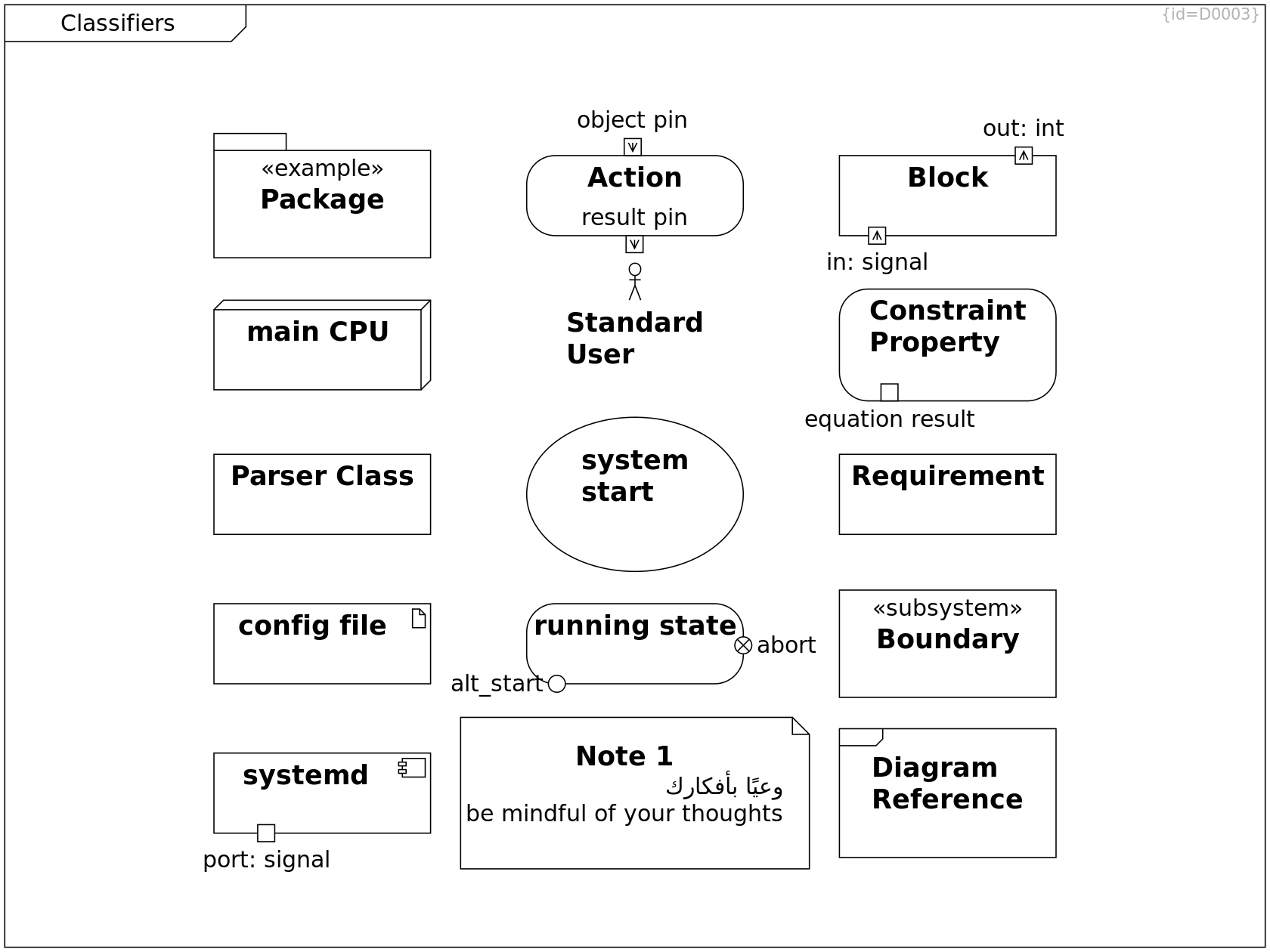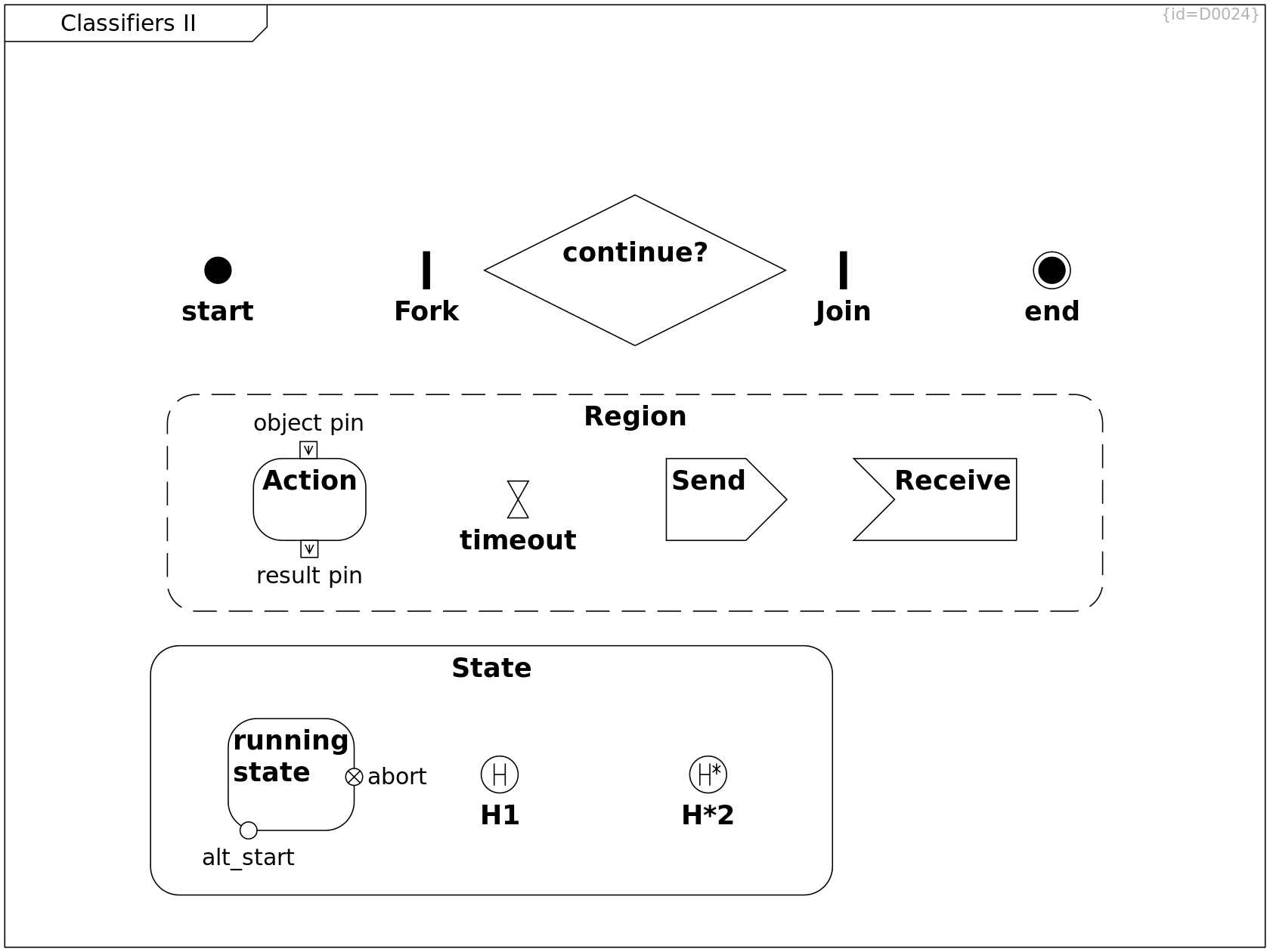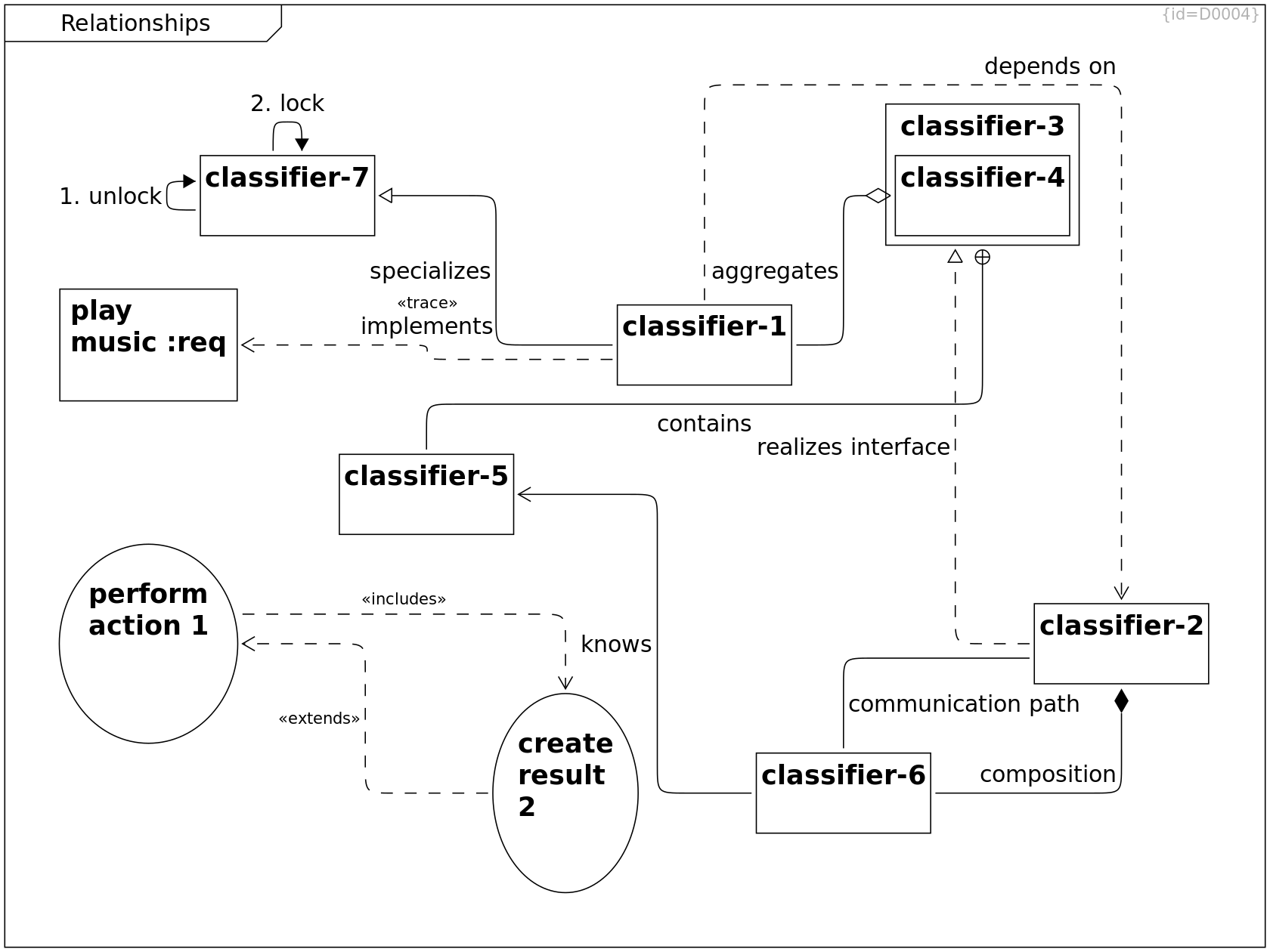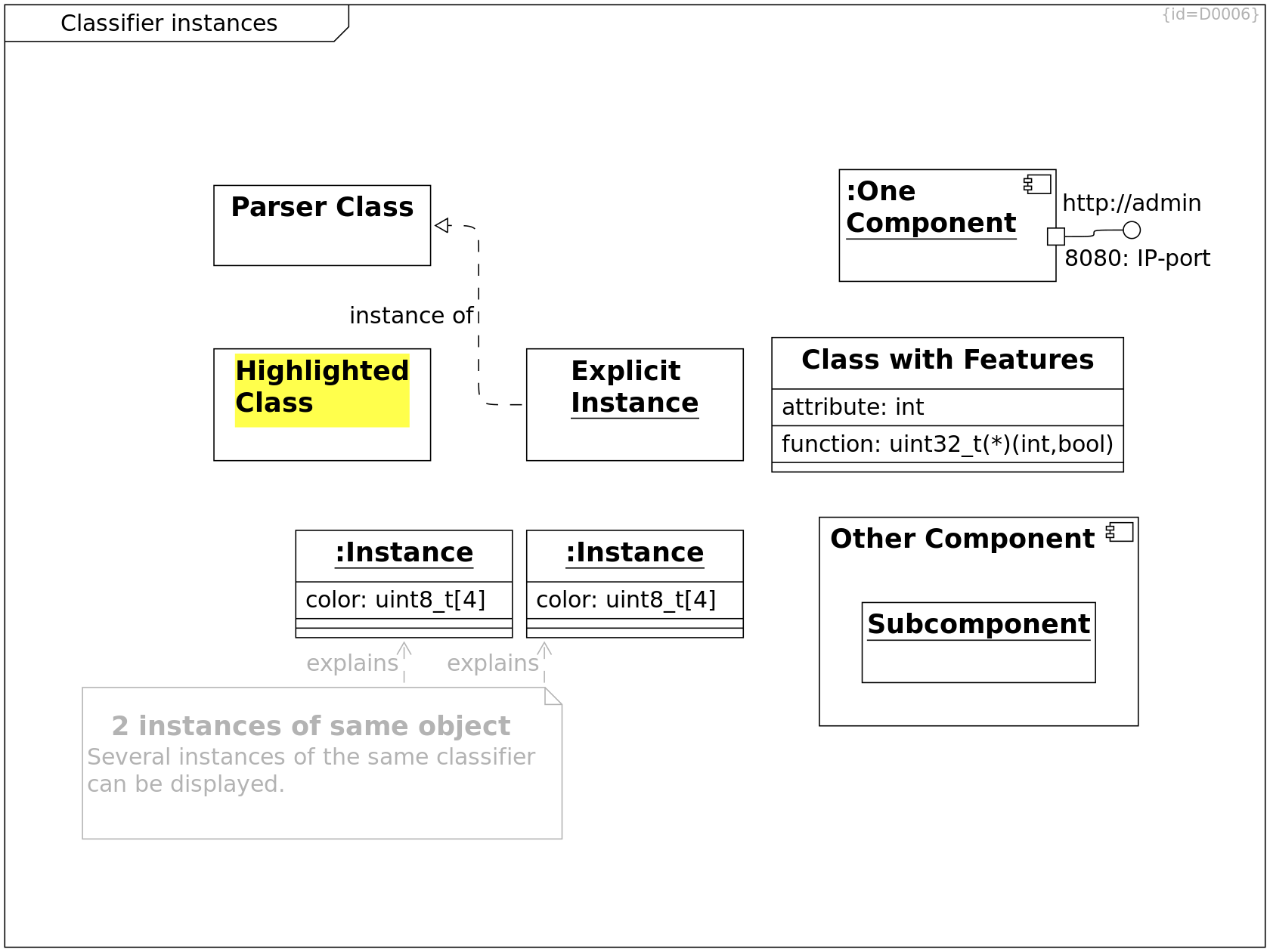Table of Contents
crystal-facet-uml creates diagrams to document system and software architecture.
Like a crystal shows different facets of the same thing, this application shows different views of the same software or system.
 |
As software architect, you create a set of diagrams describing use-cases, requirements, structural views, behavioral and deployment views.
These views show selected elements and their relationships. crystal-facet-uml keeps element names and element hierarchies consistent.
This tool runs on your local PC. It stores the model data in a json-based file which can be versioned in git, branched and merged together with your source code. crystal-facet-uml exports diagrams as svg, pdf, ps, png or the complete model as DocBook, html, json or xmi.
crystal-facet-uml provides a graphical user interface to
create, modify and delete diagrams,
create, modify and delete UML/SysML elements,
create, modify and delete relationships,
cut, copy, paste elements between diagrams,
undo and redo are supported,
multiple windows can show different or same parts of the uml model,
search for elements.
Diagrams are layouted part-automatically:
The user chooses the relative location of elements towards others,
crystal-facet-uml defines the exact locations of shown elements.
The user controls the positions of messages/transitions in sequence and timing diagrams,
crystal-facet-uml auto-layouts relationships in other diagrams.
crystal-facet-uml manages a meta model:
Diagrams are organized as a tree, similar to a book's table-of-contents;
Uml(TM)/SysML(TM) elements exist only once even if shown in many diagrams;
Relationships and features are consistent between all diagrams;
Diagram-local messages/transitions are supported in interaction diagrams: sequence, communication, timing, interaction overview.
These extension mechanisms of UML are supported: Tagged values and stereotypes including stereotype images.
Diagrams can be exported as
images: pdf, ps, svg, png,
text: utf-8, DocBook, html,
machine-readable model: json, xmi(TM).
crystal-facet-uml can also be started from command line
to export all diagrams automatically or
to import a previously exported json file or
to check and repair database files.
crystal-facet-uml can be started in graphical mode (see the section called “Graphical User Interface”) or from command line (see the section called “Command Line Interface”).
This sections presents the features of crystal-facet-uml.
This section lists what kind of elements crystal-facet-uml can draw in diagrams.
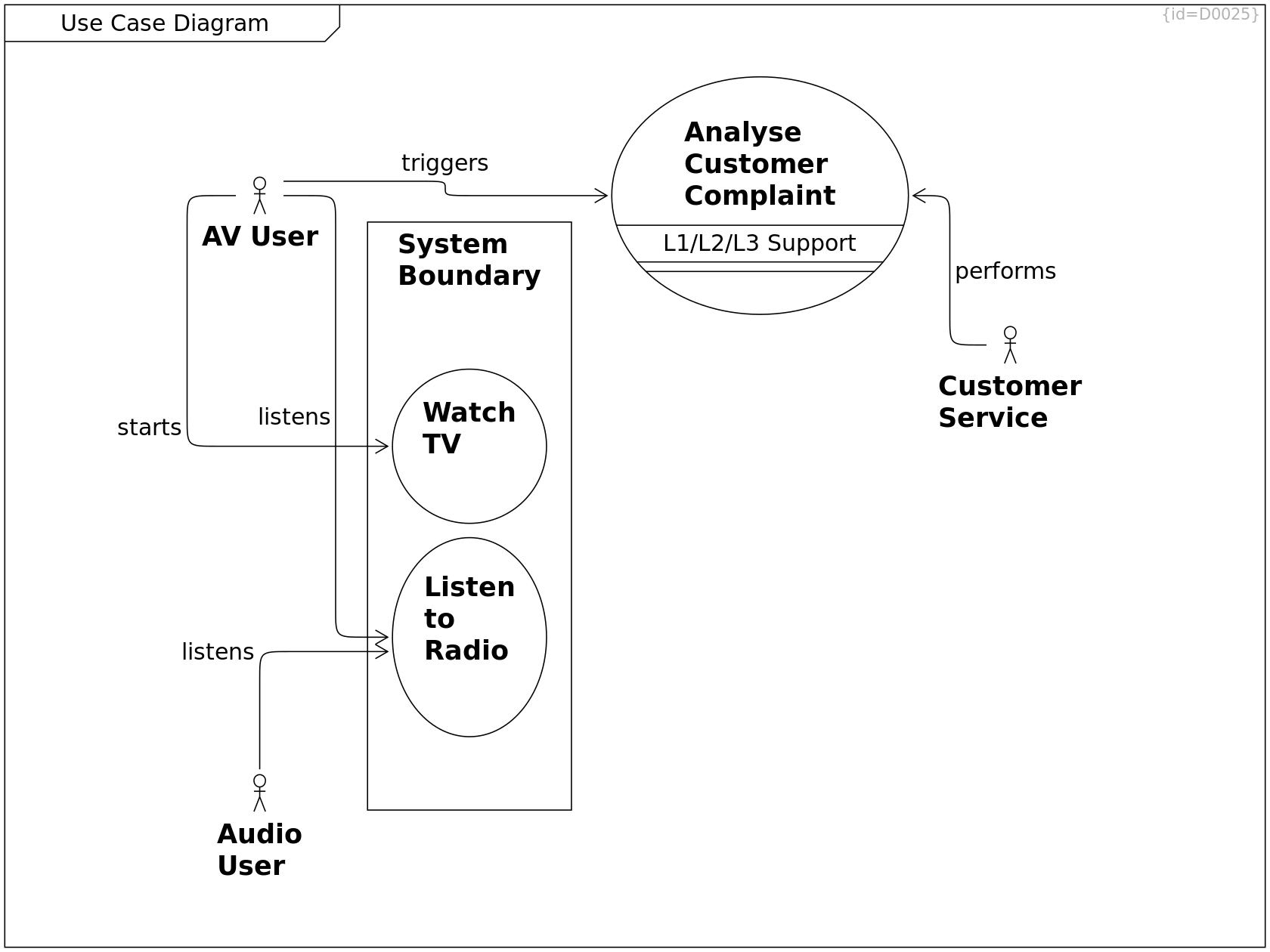 |
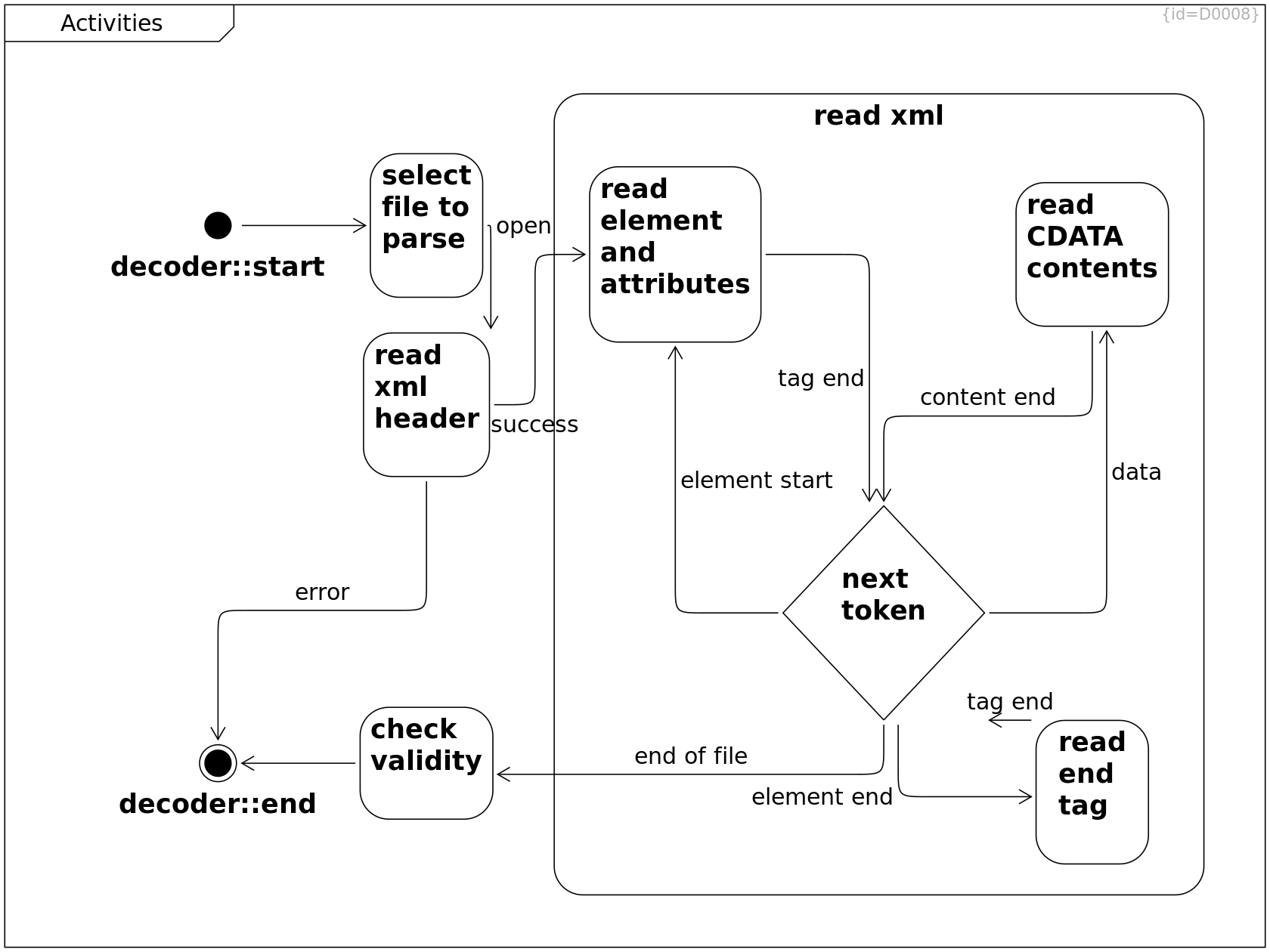 |
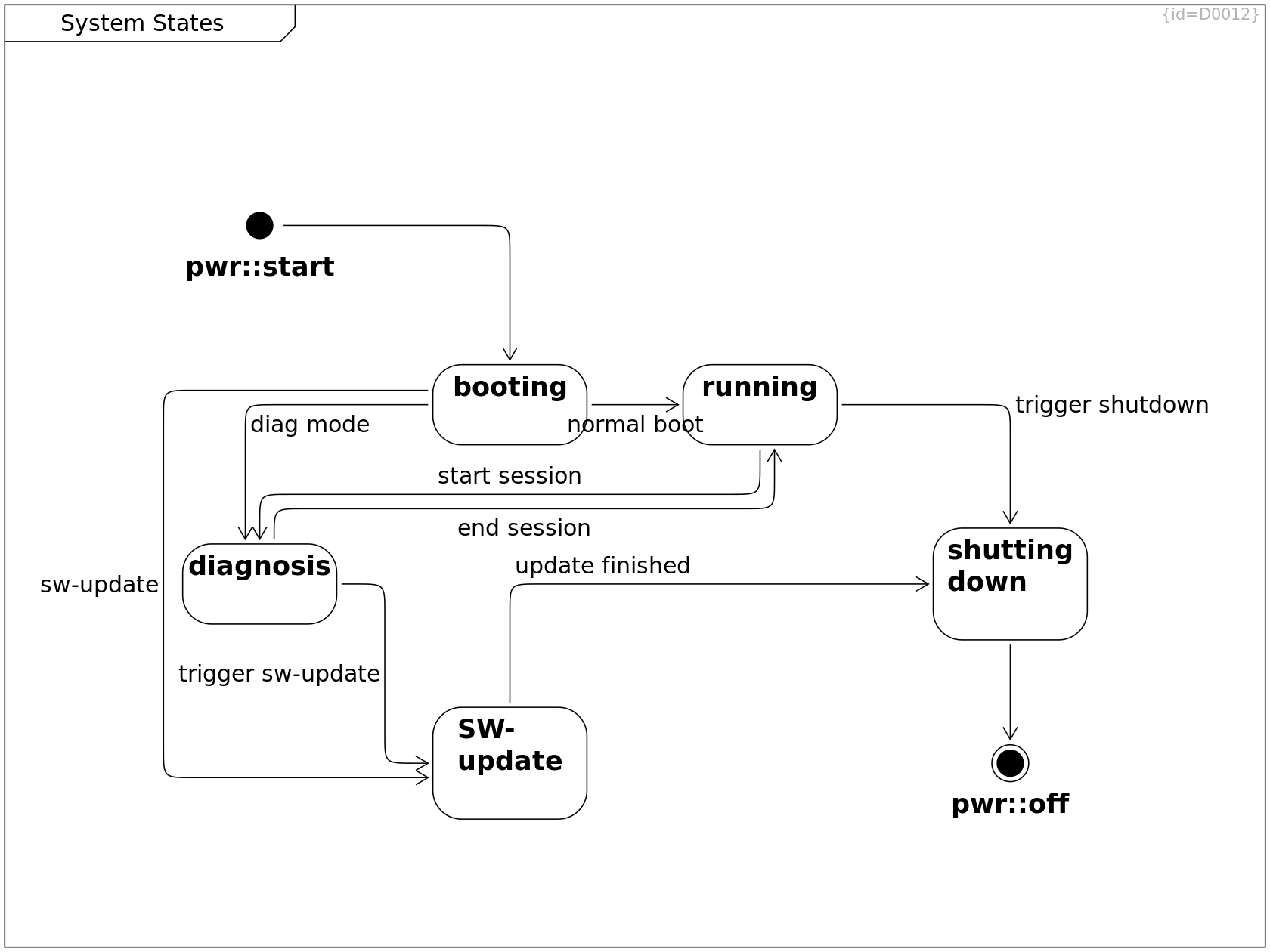 |
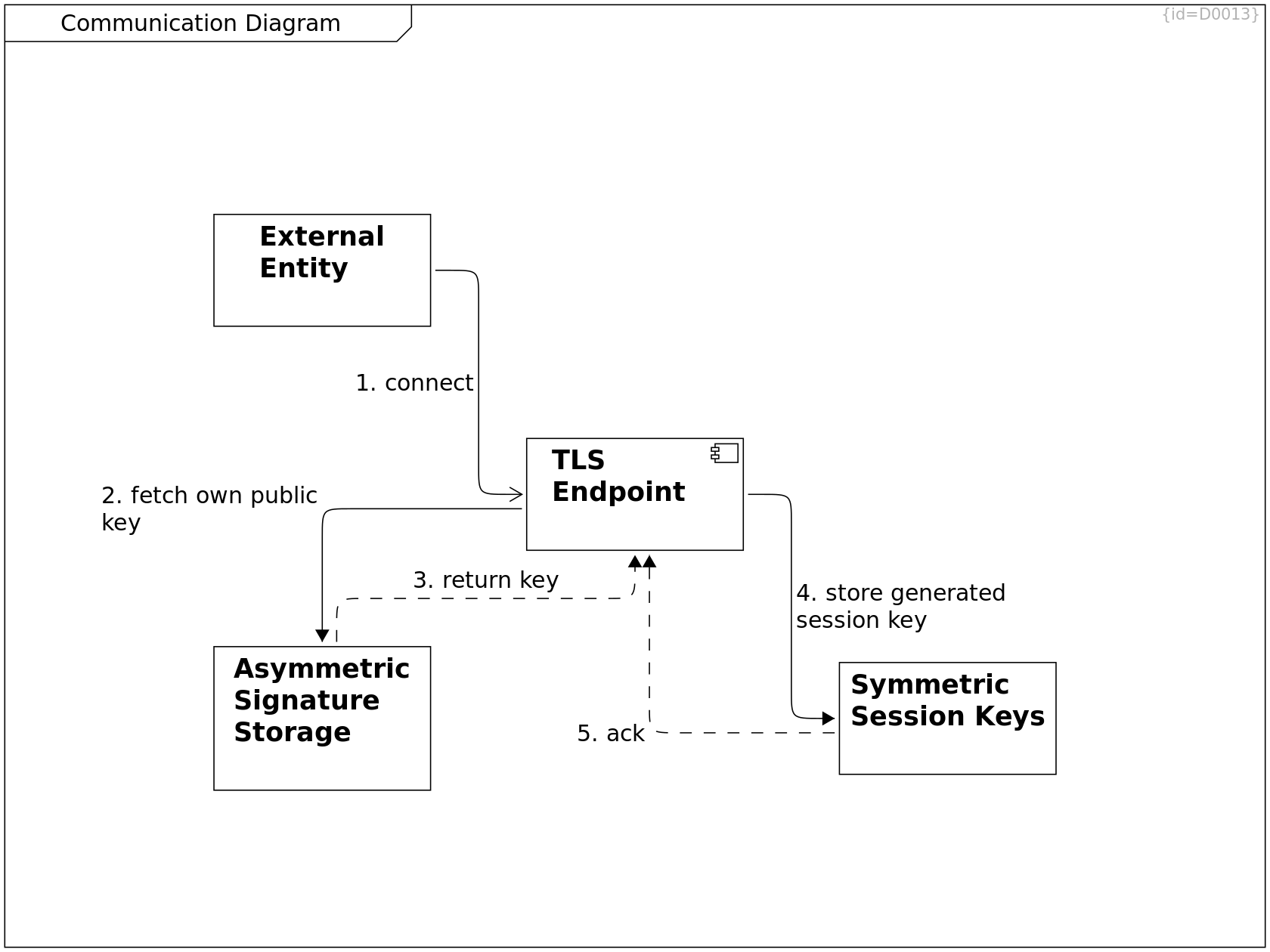 |
 |
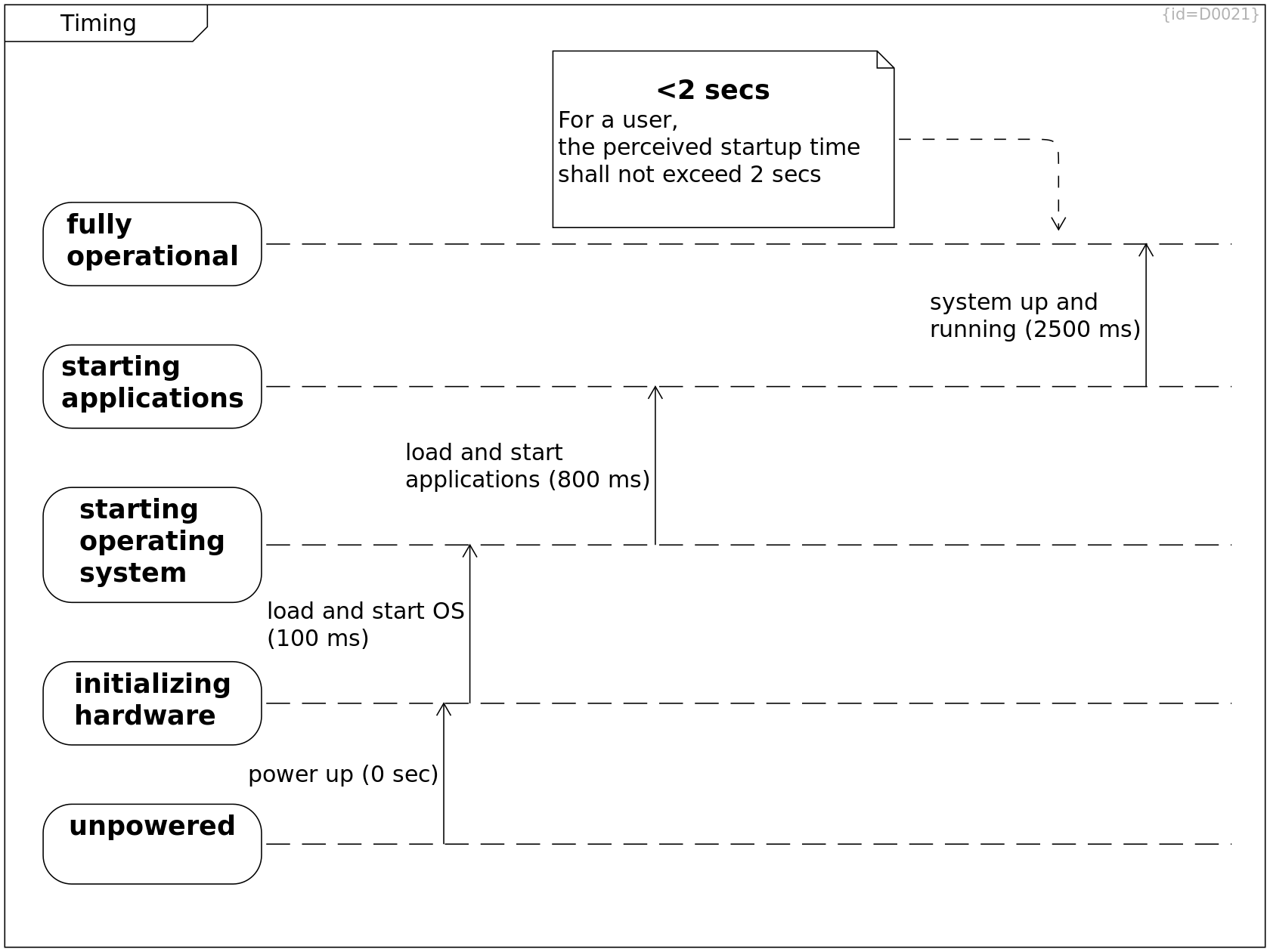 |
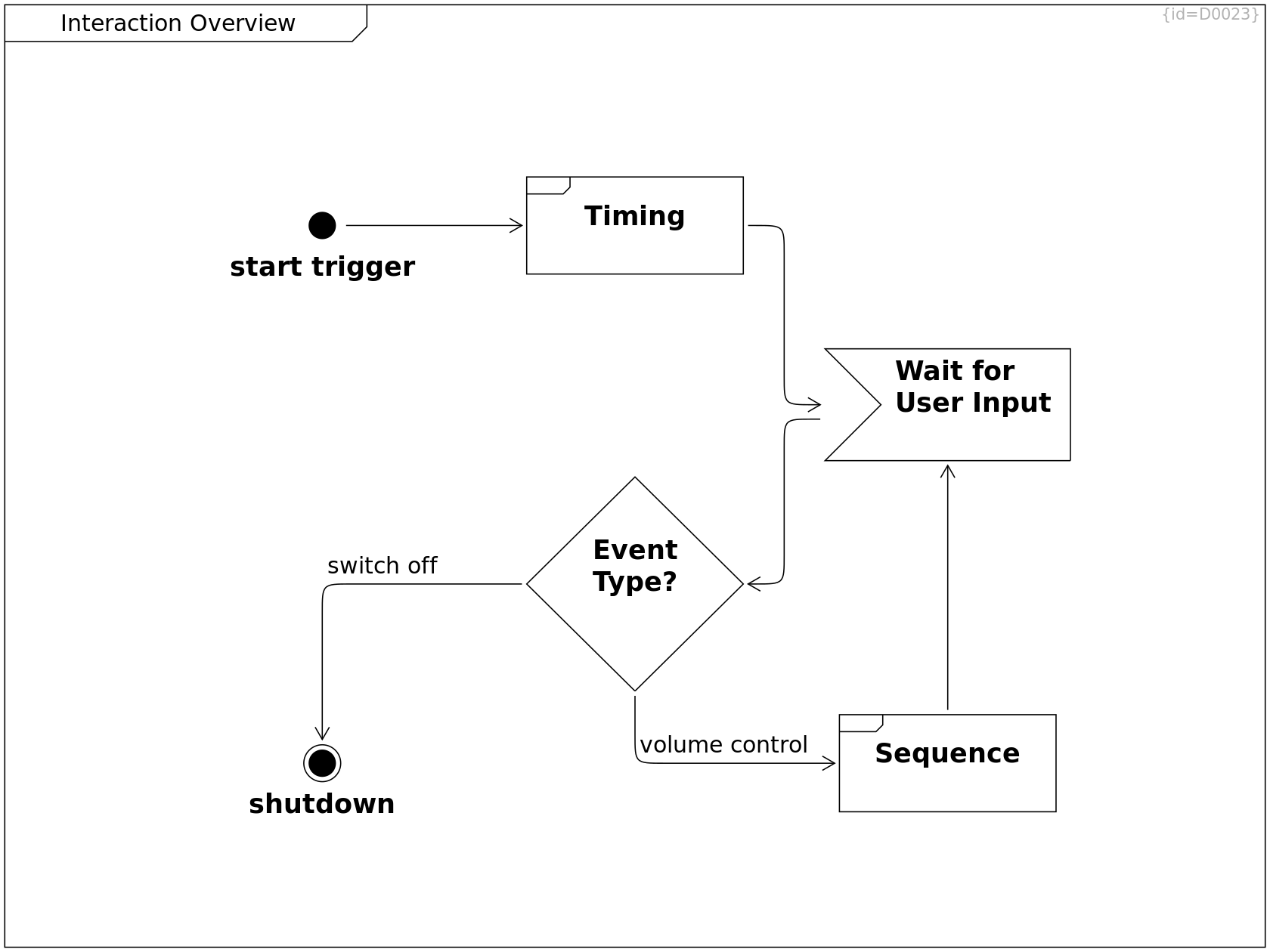 |
This section lists what kind of elements crystal-facet-uml can draw in diagrams.
 |
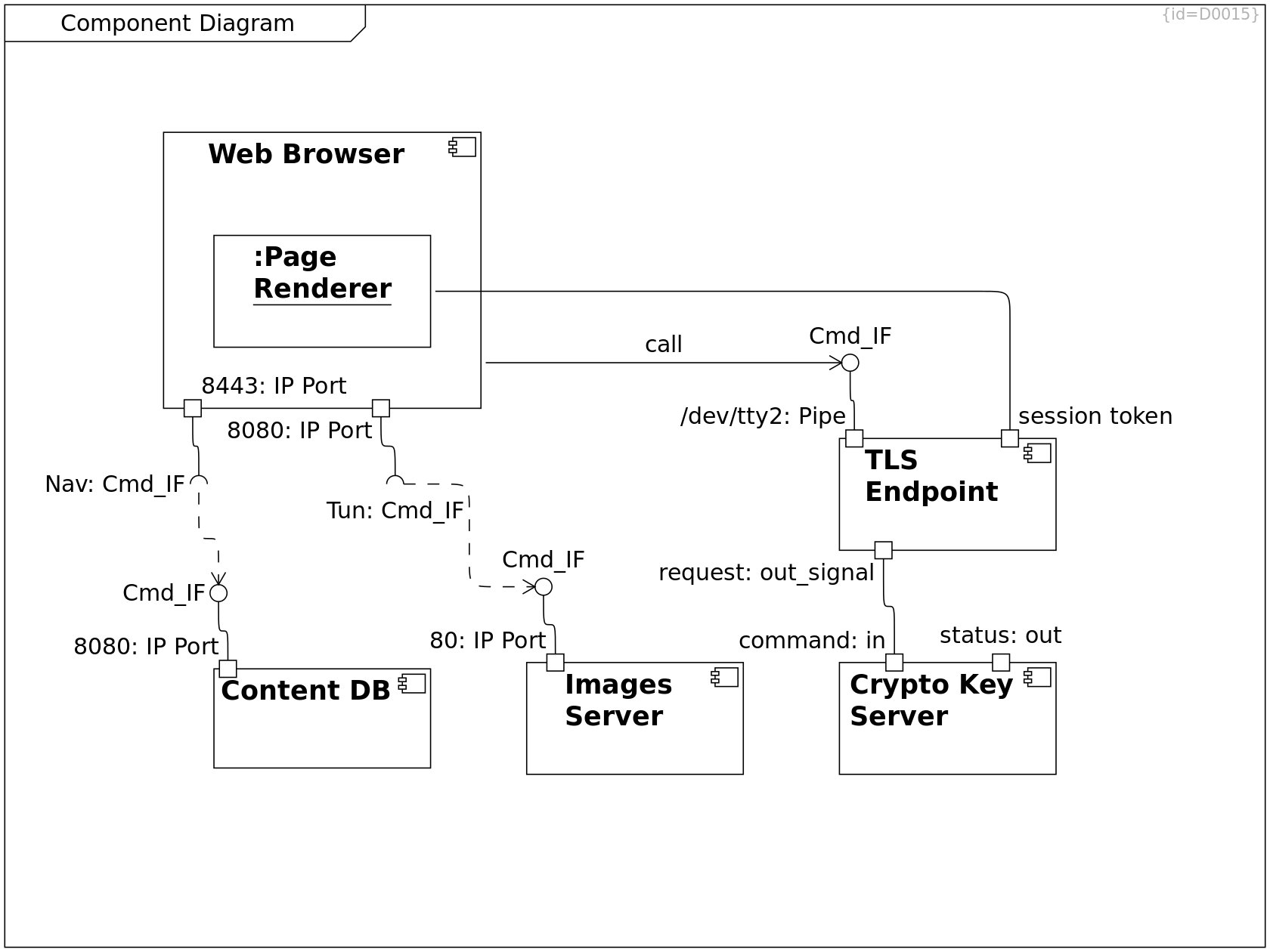 |
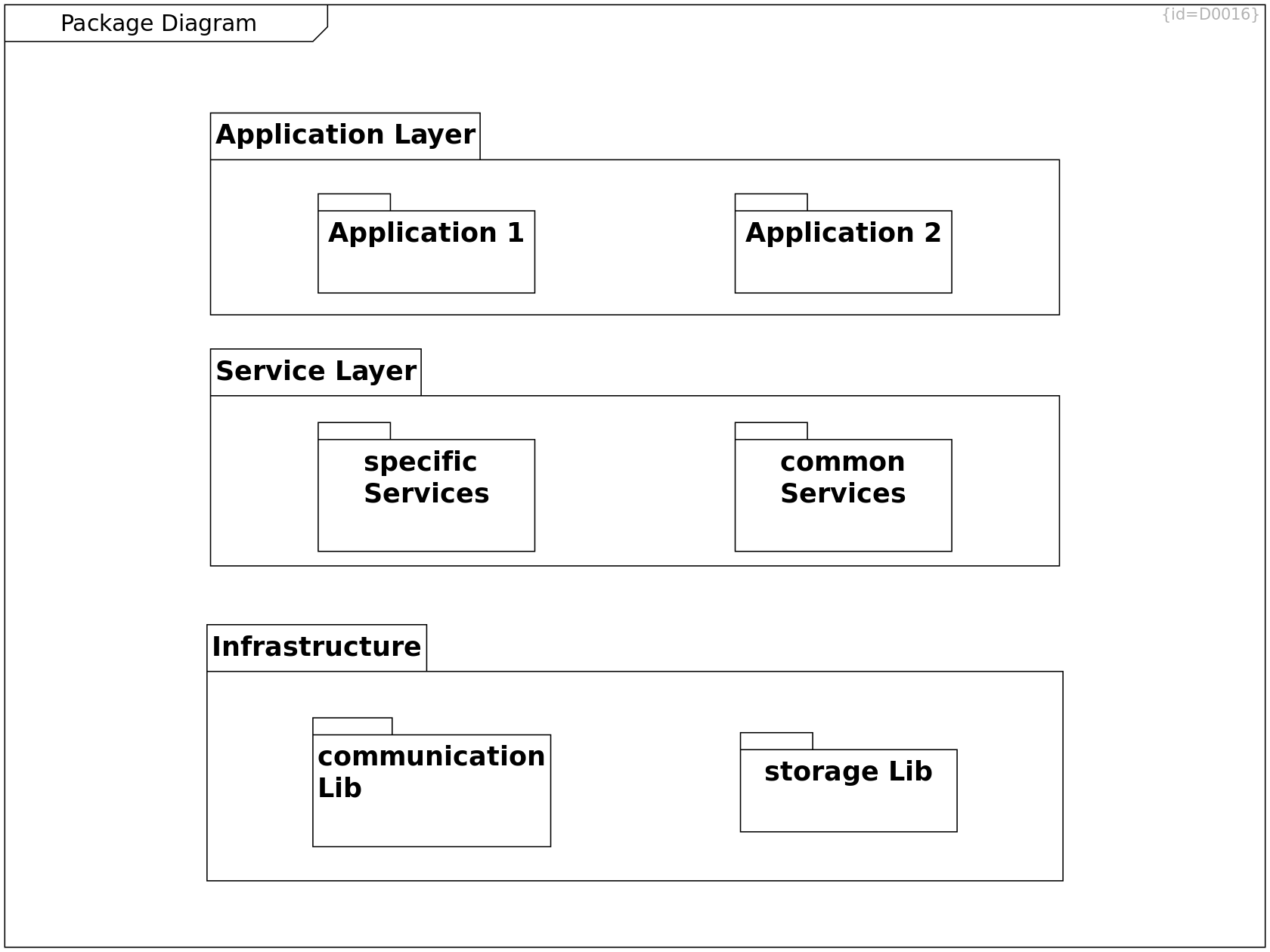 |
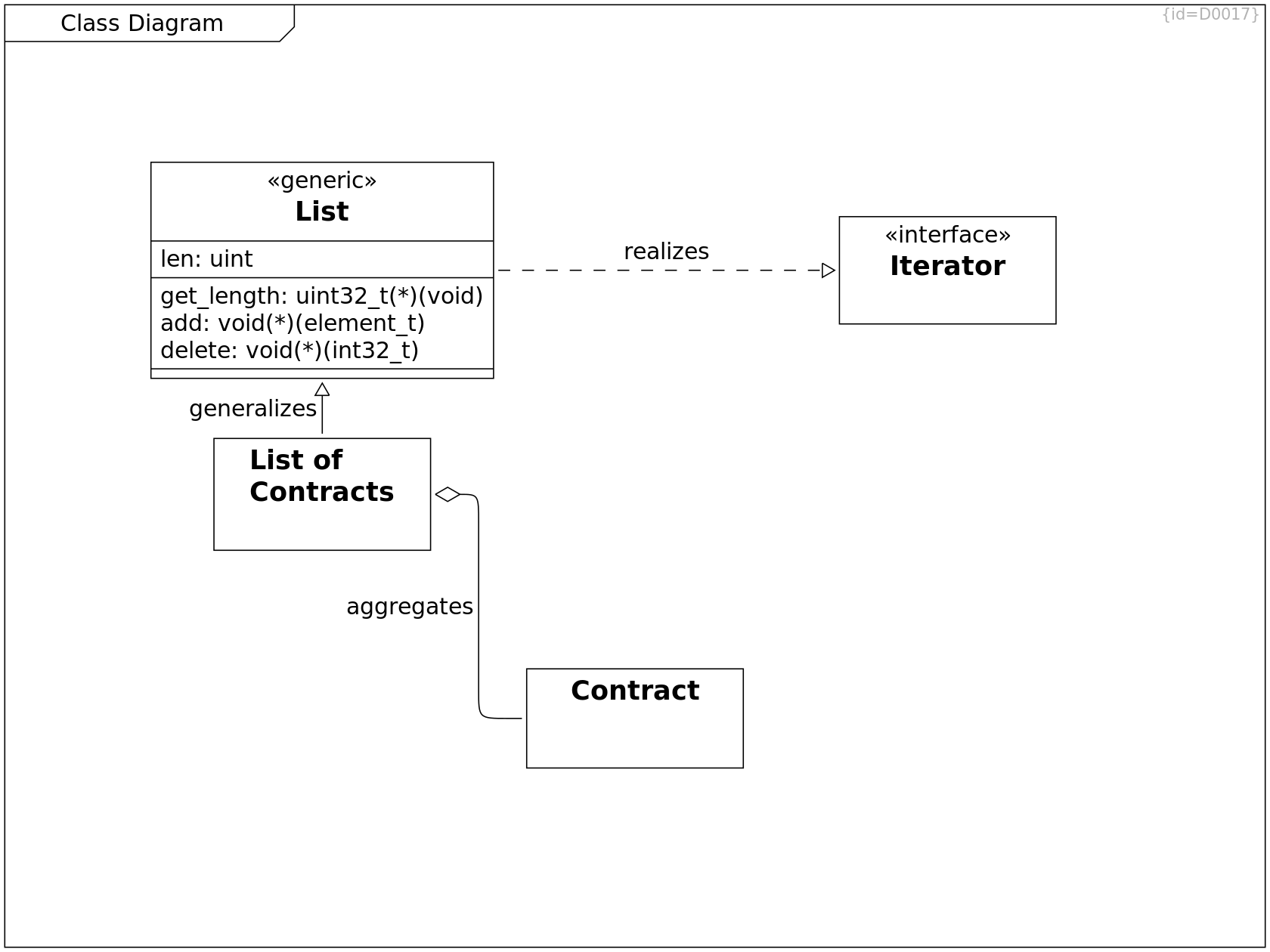 |
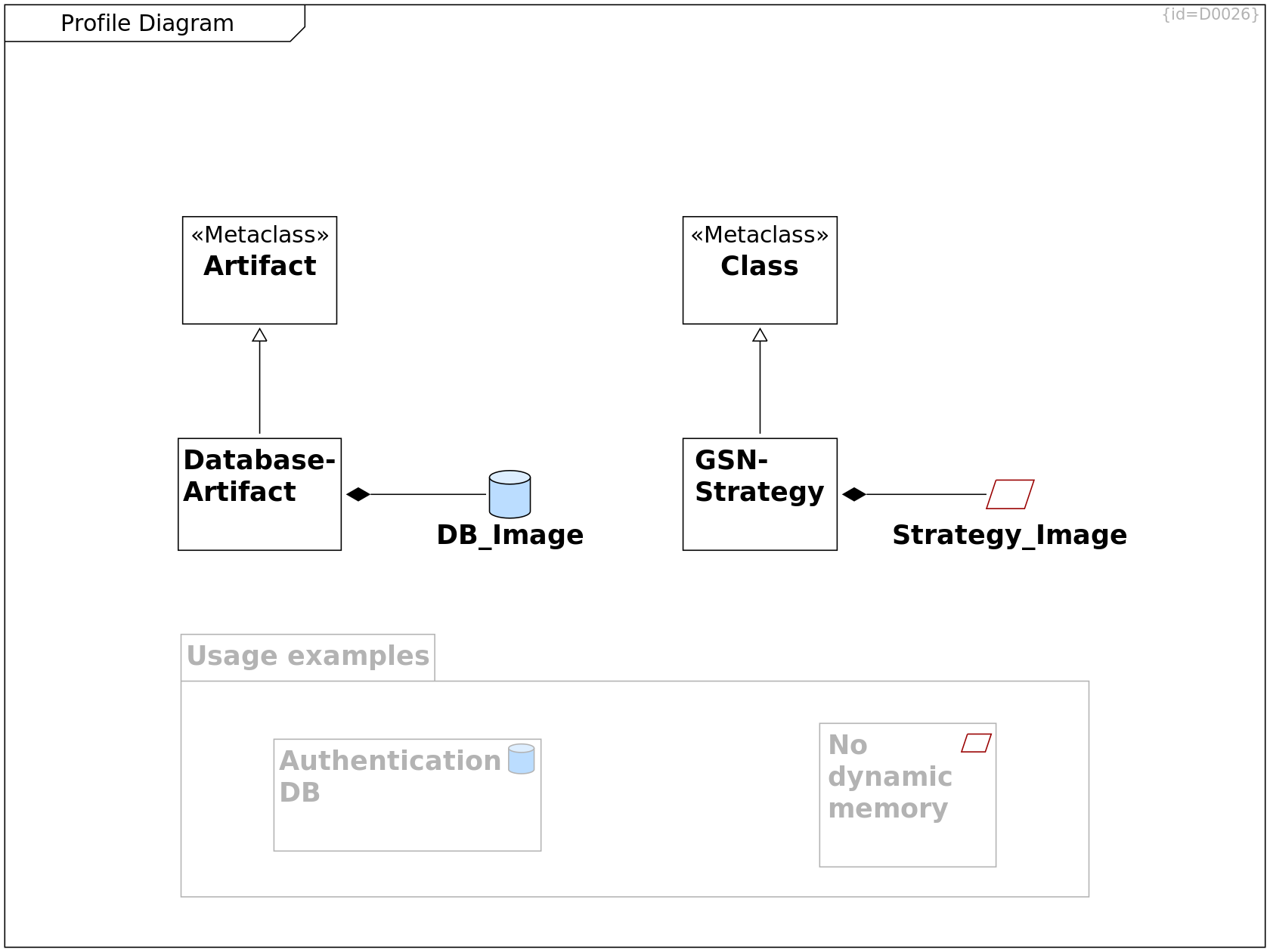 |
This section lists what kind of elements crystal-facet-uml can draw in diagrams.
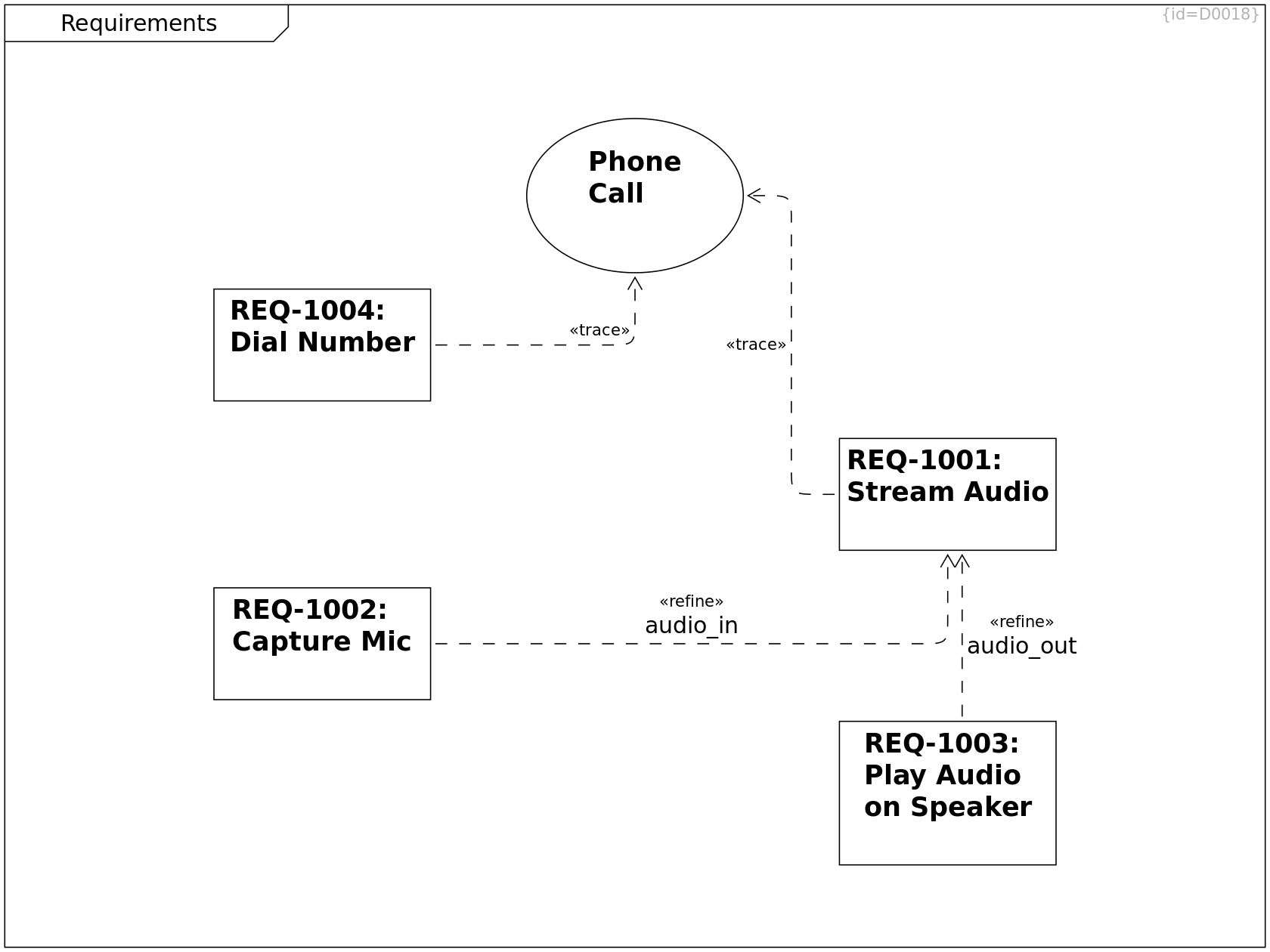 |
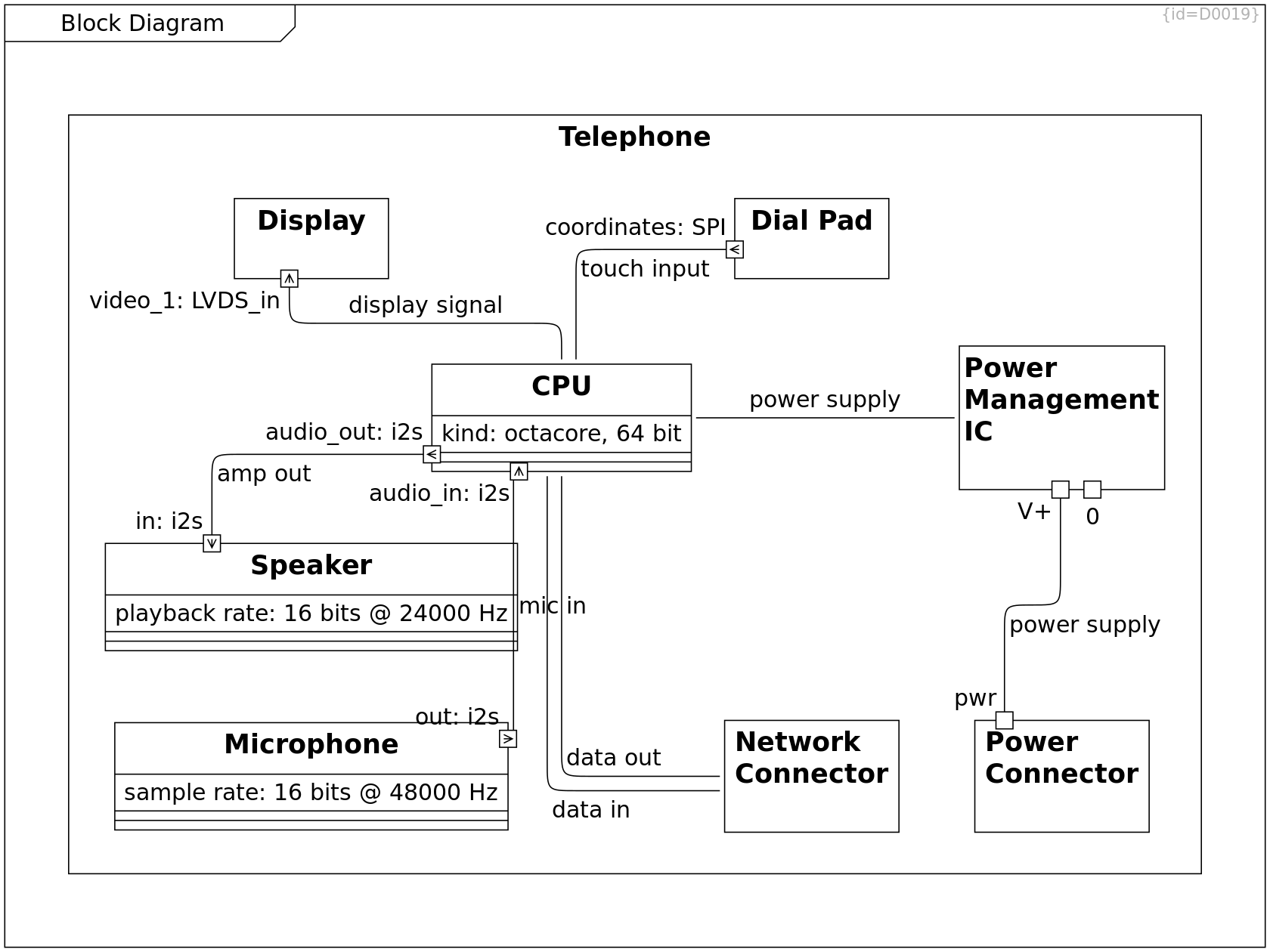 |
 |
There are further examples available as html/pdf:
And in crystal-facet-uml json format:
Start the application by a click on the application icon.
crystal-facet-uml shows a window with
toolbar on top,
drawing area in the center,
element configuration widgets to the right and
an optional notification bar at the bottom.
 |
The top row of a window provides buttons to select files, change the view and modify model elements.
Creates a new database file.
Enter a filename; a json-based file structure is used to store your data in a git-friendly format.
Opens an existing database file.
Note that write access to the parent folder is required.
If you find a .tmp-cfu file, this indicates that the last session was possibly terminated abnormally. You should open this file to continue from the latest state.

Alternatively, select the .cfuJ to continue from your last save action.
Stores the latest changes to the database immediately. Note that at regular program exit, the database is stored automatically anyhow.
The icon indicates if there are unsaved changes, it is yellow in case the window is in the background.
Exports all diagrams to the selected folder. Supported export formats are docbook, html, json, pdf, png, ps, svg, txt, xmi.
Opens another window on the same database. This new window allows you to work reliably with multiple windows on the same database.
Cut all selected (pink-cornered) elements to the clipboard (features of classifiers are copied if the classifier is selected)
Copy all selected (pink-cornered) elements to the clipboard (features of classifiers are copied if the classifier is selected)
If the clipboard does not contain diagrams, classifiers and relationships from the clipboard are copied into the current diagram.
If the clipboard contains a diagram, this diagram is pasted below the current diagram. All other elements are pasted into the new diagram.
If a classifier is identical to an existing one (same uuid), an instance of the existing classifier is pasted to the diagram. Otherwise a new classifier is created.
Deletes all selected (pink-cornered) elements.
This operation may fail on a diagram if the selected diagram contains non-selected elements or child diagrams.
Toggles the selected (pink-cornered) classifiers between classes, named instances and anonymous instances.
No effect on relationships and features.
Toggles the selected (pink-cornered) classifiers between yellow-marked, greyed-out and normal. (Does not work for relationships and features)
The center area of a window allows to view and change diagrams and model elements.
Diagrams are layouted automatically. You can influence the locations of classifiers only.
When adding too many classifiers or relationships, auto layouting may not achieve the expected results. In many cases, splitting the diagram into two or more diagrams solves the layouting issues and at the same time improves understandability by focusing on one aspect/topic per diagram. For examples, see the section called “Use Abstractions and Hierarchies”.
Enter the ID of an element (e.g. C0001) or a part of its name or description to find diagrams containing this element.
Enter nothing to find diagrams containing elements without description.
Start a search to displays the results.
To navigate to parent, sibling or children diagrams, click on the diagram.
To create a new diagram, click on the
icon, or the smaller
icon for a new child-diagram.
To restructure the diagram tree, drag a diagram name to the new location.
Click on a diagram or classifier or feature or relationship to edit the name, type and description of that object.
The yellow corners indicate which object is currently focused.
Click on an element to select or unselect an object (pink corners).
The toolbar buttons apply to this pink-cornered set.
To move classifiers within the diagram, 1.) press, 2.) drag and 3.) release the mouse button.
Note: When moving a classifier, this is moved in all diagrams where it appears. Order and locations of things stay consistent between different views.
It is not possible to change source and destination classifiers of relationships. Instead, delete the old and create a new relationship.
To create a classifier, click at an empty space in the diagram.
To create a child classifier, click into the white space of the parent classifier. (Alternatively, create a classifier and a containment relationship.)
To create a feature, click onto a classifier border (not on the classifier name).
To create a relationship, press on the source classifier or feature and drag it to the destination classifier or feature.
To modify existing elements, switch back to edit mode: the section called “Edit”.
The right side of a window shows the properties of the focused model element.
Edit the properties of the focused (yellow-cornered) object.
name of the focused object
stereotype of the focused object.
Stereotype names shall consist of characters that are valid XML tokens (Nmtoken).
Multiple stereotypes shall be separated by comma.
Rendering images of stereotypes only works for single stereotypes.
In case of properties and operations enter the type of the property or operation arguments, in case of tagged values, enter the value (instead of a stereotype).
type of the focused object
description of the focused object.
For html and DocBook export, use a double linebreak to create a new paragraph, start lines with *, + or - to format a list, use D0001#id and D0001#name to create a link to the diagram D0001 (showing either the id or the name).
The bottom row of a window, if shown, displays the result of the last user interaction.
The notification bar appears automatically when there is a new message.
Such a message may show statistics on performed actions like created, exported, modified, deleted for the following elements
diagrams,
classifiers refer to the model-nodes,
classifier-occurrences refer to the visualization of a classifier in a diagram,
features denote properties, operations and ports of classifiers,
relationships are the edges between the classifiers or features or lifelines,
lifelines refer to implicit and automatically managed objects needed to visualize temporal behavior.
This program creates diagrams that strive for compatibility to
UML 2.5
SysML 1.5
MOF 1.4.1
In some cases, it deviates from these standards for several reasons:
Reduce complexity to be able to handle such models in a small open source project
Reduce feature-set to improve understandability of diagrams even to non-software-architects
Reduce feature-set to enhance usability of the program
This section gives an overview on standards and implementation-status of crystal-facet-uml. It may be incomplete.
Classifiers are the nodes in the model-graph.
The table shows the classifier types introduced by different specifications and a comment stating how this is implemented in crystal-facet-uml.
Spec/Context | Comment | |
|---|---|---|
| SysML |
Limitations: Compartment Order is "properties, operations" instead of "constraints, operations, receptions, parts, (bound) references, values, properties, stereotype-tagged-values, behavior, namespace, structure" Limitations: No labeled compartments Limitations: no Multiplicities of Block-Instances. |
|
SysML / Parametric |
Limitations: Only the rounded-rect symbol is supported. |
|
UML / Deployment | |
|
UML / Use Case |
A subsystem is a component with stereotype subsystem |
| UML | |
| UML | |
| UML | |
| UML, SysML | |
| UML |
Limitations: No active classes |
| UML | |
| UML | |
| UML, SysML | |
| UML, SysML |
This element shows the image of its stereotype. It exists since version 1.48.0; cannot be used in version 1.47.0 and older. The description field is reserved. Use an additional comment if needed. |
| UML, SysML |
This element declares a stereotype. It exists since version 1.47.0; cannot be used in version 1.46.0 and older. The description field is reserved for icon and template data. Use an additional comment to describe the stereotype. An image can be specified by stating lines and curves according to the SVG-path spec version 2.0. <path fill="#e0e0e0" stroke="#0088cc" d="M 2,2 10,2 8,8, 0,8 Z"/> See examples at the section called “Example stereotype images” |
| SysML | |
|
UML, SysML / Use Case, Sequence | |
|
UML, SysML / Use Case |
Limitations: No SysML extension points |
| UML / Interaction Overview |
Hint: To easily find the referenced diagram, name the interaction use identical to the diagram. XMI-Export: For xmi export, this object may only occur in interaction diagrams: interaction overview, communication, sequence and timing. |
|
UML 2.5 (ch15.2) / Activity | |
|
UML / Activity |
XMI-Export: For xmi export, all regions belonging to the same set of activities need an outer, enclosing activity. |
|
UML, SysML / Activity |
XMI-Export: For xmi export, all activity-nodes belonging to the same set of activities need an outer, enclosing activity. |
|
UML, SysML / Activity |
XMI-Export: For xmi export, all activity-nodes belonging to the same set of activities need an outer, enclosing activity. |
|
UML, SysML / Activity |
XMI-Export: For xmi export, all activity-nodes belonging to the same set of activities need an outer, enclosing activity. |
| UML, SysML / Activity |
XMI-Export: For xmi export, all activity-nodes belonging to the same set of activities need an outer, enclosing activity. |
|
UML, SysML / Activity |
XMI-Export: For xmi export, all activity-nodes belonging to the same set of activities need an outer, enclosing activity. |
|
|
UML 2.5 (ch14.2.4,15.3), SysML / Activity, State |
In activity diagrams, this is called decision, in statesmachines it is called choice. XMI-Export/State-context: For xmi export, all states belonging to the same statemachine need an outer, enclosing state. XMI-Export/Activity-context: For xmi export, all activity-nodes belonging to the same set of activities need an outer, enclosing activity. |
|
|
UML 2.5 (ch14.2.4), SysML / Activity, State |
Limitations: There is no distinction in ActivityInitial and FlowInitial. XMI-Export/State-context: For xmi export, all states belonging to the same statemachine need an outer, enclosing state. XMI-Export/Activity-context: For xmi export, all activity-nodes belonging to the same set of activities need an outer, enclosing activity. |
|
|
UML 2.5 (ch14.2.4), SysML / Activity, State |
Limitations: There is no distinction in ActivityFinal and FlowFinal. Limitations: There is no separate terminate state-type. XMI-Export/State-context: For xmi export, all states belonging to the same statemachine need an outer, enclosing state. XMI-Export/Activity-context: For xmi export, all activity-nodes belonging to the same set of activities need an outer, enclosing activity. |
|
|
UML 2.5 (ch14.2), SysML / State, Timing |
Limitations: No symbol for hidden decompositions, no regions (swimlanes) in composite states. Limitations: entry/exit/do list. XMI-Export: For xmi export, all states belonging to the same statemachine need an outer, enclosing state. |
|
|
UML 2.5 (ch14.2.4), SysML / State |
XMI-Export: For xmi export, all states belonging to the same statemachine need an outer, enclosing state. |
|
|
UML 2.5 (ch14.2.4), SysML / State |
XMI-Export: For xmi export, all states belonging to the same statemachine need an outer, enclosing state. |
|
| SysML |
not supported. Limitations: Compartment Order of Classifiers is "properties, operations" instead of "operations, properties, stereotype-tagged-values" |
| UML, SysML |
not supported. Note: Use a class instead. |
| SysML |
not supported. |
|
|
UML 2.5 (ch15.3), SysML / Activity, State |
In activity diagrams, it is called merge, in state diagrams junction node. This is not supported. Note: You may directly connect the arrows to the target activity/state. |
|
UML, SysML / Activity |
not supported. Note: Use a parent activity instead. |
An InstanceSpecification (UML) denotes an instantiation of a classifier. crystal-facet-uml allows any classifier to appear in different diagrams as classifier, as anonymous InstanceSpecification or as named InstanceSpecification. (Rationale: If a classifier is an instance may depend on the context: An M1-class may be an instance if shown in an M2-meta-class diagram, an XML-parser-class may be an instance if shown in the context of stream processors.)
Features are elements attached to one classifier.
The table shows the feature types introduced by different specifications, if they are visible in any diagram or just once, and a comment stating how this is implemented in crystal-facet-uml.
Spec | Comment | |
|---|---|---|
| UML, SysML |
Limitations: no SysML Flow-Properties refinement. |
| UML, SysML | |
| UML, SysML | |
| UML, SysML | |
| UML, SysML |
Limitations: no SysML-compartment Notation supported. Limitations: no SysML-nested-ports, SysML-proxy-port, SysML full-ports supported. Limitations: no flow property, no compartment notation, no port-compartments. Limitations: no UML behavior ports. |
| UML, SysML | |
| UML, SysML | |
| UML, SysML | |
| UML, SysML | |
| UML, SysML |
Exists since version 1.47.0; cannot be used in version 1.46.0 and older. |
| UML 2.5 (ch17.2), SysML |
Lifelines are managed automatically, one cannot create, modify or delete them. Limitations: One lifeline is visible only in one diagram. Limitations: Lifelines start and end only at diagram border. Limitations: ExecutionSpecification (ActivityBar) are not supported. |
Relationships are the edges of the model-graph.
The table shows the relationship types introduced by different specifications, a classification in which diagram type to use them preferably, and a comment stating how this is implemented in crystal-facet-uml.
Spec/Context | Comment | |
|---|---|---|
| UML, SysML | |
|
UML, SysML / Deployment, Package, Internal Block, Composite Structure, Activity, State | |
|
UML / Deployment | |
|
UML / Deployment | |
|
UML, SysML / Component, Composite Structure, Block, Internal Block | |
|
UML, SysML / Class, Use Case |
Note: SysML calls this ReferenceAssociation Limitations: no AssociationClass(SysML: ParticipantProperty) exists. Limitations: no AssociationEnd Classes exist, no multiplicities, no roles, no ownership (dot notation). Limitations: no ternary associations (only two ends supported). Limitations: no non-navigateable ends (crosses) suported yet - see todo.txt. |
|
UML, SysML / Class |
Note: SysML calls this SharedAssociation |
|
UML, SysML / Class |
Note: SysML calls this PartAssociation |
|
UML, SysML / Class | Limitations: no Generalization-Sets supported |
|
UML / Class | |
|
SysML / Requirement | |
|
SysML / Requirement | |
|
UML, SysML / Use Case | Limitations: no SysML-condition-notes can be attched to this relationship |
|
UML, SysML / Use Case | |
|
UML, SysML / Activity, State |
In activity diagrams, this is called control flow, in statesmachines it is called transition. |
|
UML, SysML / Activity | |
|
UML, SysML (?) / Sequence, Timing, Communication, Interaction overview | |
|
UML, SysML (?) / Sequence, Timing, Communication, Interaction overview | |
|
UML, SysML (?) / Sequence, Timing, Communication, Interaction overview | |
|
UML, SysML / Internal Block |
not supported. Limitations: No Bi-directional Connectors Note: SysML calls this BindingConnector Note: Use a Communication Path instead. |
|
SysML / Block Definition |
not supported. Note: Use an Object Flow instead. |
|
UML 2.5 (ch15.5) / Block Definition |
Use a stereotype, e.g. a flow_exception as proposed in the section called “Example stereotype images” |
Diagrams are views on the model-graph. They select classifiers and may filter their features and relationships.
The table shows the diagram types introduced by different specifications and a comment stating how this is implemented in crystal-facet-uml.
Spec | Comment | |
|---|---|---|
| - |
This is an overview diagram showing only classifiers as a list. This diagram hides any feature and any relationship. |
| - |
This is an overview diagram showing only 2-dimension-layouted classifiers. This diagram hides any feature and any relationship. |
| SysML | |
| SysML | |
| SysML | |
| UML | |
| UML | |
| UML | |
| UML, SysML | |
| UML | |
| UML | |
| SysML | |
| UML, SysML | |
| UML |
Limitations: There is no link from Diagram-References to referenced Diagrams Containments cannot be shown in this diagram type This diagram hides any feature This diagram hides relationships except the messages of the shown scenario |
| UML 2.5 (ch15.2), SysML | Limitations: Swimlanes not supported |
| UML, SysML | |
| UML |
Containments cannot be shown in this diagram type This diagram hides any feature This diagram hides relationships except the messages of the shown scenario |
| UML, SysML |
This diagram hides any feature This diagram hides relationships except the messages of the shown scenario |
| UML |
This diagram hides any feature This diagram hides relationships except the messages of the shown scenario |
For use as stereotype images, this section shows some generated svg-paths, licensed under Apache-2.0 or Public Domain at your choice.
Copy these xml-fragments to the description field of a stereotype-classifier in order to show these images next to all elements implemening the respective stereotype.
Stereotype images
- deploy_database
<path d="m 4,5 l 0,22 c 0,2.25 5.25,4 12,4 s 12,-1.75 12,-4 l 0,-22 " /> <path d="m 4,5 c 0,-2.1875 5.375,-4 12,-4 s 12,1.8125 12,4 s -5.375,4 -12,4 s -12,-1.8125 -12,-4 " />
- deploy_local
<path d="m 1,23 l 16,8 l 8,-6 l 3,-11 l -16,-7 l -2,11 z " /> <path stroke="none" fill="#cccccc" d="m 5,23 l 11.5,5.5 l 5,-3.5 l -11,-5.1875 z " /> <path stroke="none" fill="#0000dd" d="m 11.5,17 l 12.5,6 l 2,-8 l -12.8125,-6 z " />
- deploy_cloud
<path d="m 3,22 c -3,-3 3,-9 6,-6 c 0,-5 8,-6 9,-1 c 7,-2 14,4 11,7 z " />
- ecb_entity
<path d="M 6,18 C 6,11.375 11.375,6 18,6 S 30,11.375 30,18 S 24.625,30 18,30 S 6,24.625 6,18 " /> <path d="M 7,30.5 L 29,30.5 " />
- ecb_control
<path d="M 6,18 C 6,11.375 11.375,6 18,6 S 30,11.375 30,18 S 24.625,30 18,30 S 6,24.625 6,18 " /> <path d="M 22,1 L 17,6 L 22,11 " />
- ecb_boundary
<path d="M 6,18 C 6,11.375 11.375,6 18,6 S 30,11.375 30,18 S 24.625,30 18,30 S 6,24.625 6,18 " /> <path d="M 1,9 L 1,27 M 1,18 L 6,18 " />
- gsn_goal
<path stroke="#000099" d="M 1,7 L 31,7 L 31,25 L 1,25 Z " />
- gsn_context
<path stroke="#000099" d="M 8,25 C 0,25 0,7 8,7 L 24,7 C 32,7 32,25 24,25 Z " />
- gsn_strategy
<path stroke="#000099" d="M 7,7 L 31,7 L 25,25 L 1,25 Z " />
- gsn_assumption
<path stroke="#000099" d="M 1,10 C 1,5.625 7.75,2 16,2 S 31,5.625 31,10 S 24.25,18 16,18 S 1,14.375 1,10 " /> <path stroke="#000099" d="M 24,25 L 26.5,19 L 29,25 M 24.75,23.5 L 28.25,23.5 " />
- gsn_justification
<path stroke="#000099" d="M 1,10 C 1,5.625 7.75,2 16,2 S 31,5.625 31,10 S 24.25,18 16,18 S 1,14.375 1,10 " /> <path stroke="#000099" d="M 25,24 C 25,26 29,26 29,24 L 29,19 L 25,19 " />
- gsn_solution
<path stroke="#000099" d="M 1,16 C 1,7.75 7.75,1 16,1 S 31,7.75 31,16 S 24.25,31 16,31 S 1,24.25 1,16 " />
- queue_buffer
<path d="M 1,8 L 31,8 L 31,24 L 1,24 " /> <path d="M 13,8 L 13,24 M 19,8 L 19,24 M 25,8 L 25,24 " />
- queue_server
<path d="M 1,16 C 1,7.75 7.75,1 16,1 S 31,7.75 31,16 S 24.25,31 16,31 S 1,24.25 1,16 " />
- queue_queue
<path d="M 1,11 L 18.5,11 L 18.5,21 L 1,21 " /> <path d="M 8,11 L 8,21 M 11.5,11 L 11.5,21 M 15,11 L 15,21 " /> <path d="M 21,16 C 21,13.25 23.25,11 26,11 S 31,13.25 31,16 S 28.75,21 26,21 S 21,18.75 21,16 " />
- reason_decision
<path d="m 8,12 l -4,7 1,1 6,0 1,-1 -4,-7 l 8,-4 9,0 l -4,7 1,1 6,0 1,-1 -4,-7 " /> <path d="m 15,5 l 1,3 m 0,2 l 0,17 " />
- reason_chosen
<path d="m 1,24 4,4 22,0 4,-4 " /> <path stroke="#00aa00" d="m 8,17 c 0,-4.4375 3.5625,-8 8,-8 s 8,3.5625 8,8 s -3.5625,8 -8,8 s -8,-3.5625 -8,-8 " /> <path stroke="#00aa00" d="m 11,17 l 10,0 m -5,-5 l 0,10 " />
- reason_rejected
<path d="m 1,24 4,4 22,0 4,-4 " /> <path stroke="#cc0000" d="m 8,17 c 0,-4.4375 3.5625,-8 8,-8 s 8,3.5625 8,8 s -3.5625,8 -8,8 s -8,-3.5625 -8,-8 " /> <path stroke="#cc0000" d="m 11,17 l 10,0 " />
- flow_object
<path d="M 32,32 M 0,0 M 5,5 27,5 27,27 5,27 Z " />
- flow_control
<path d="M 1,16 l 2,0 m 3,0 l 2,0 m 3,0 l 2,0 m 3,0 l 2,0 m 3,0 l 2,0 m 3,0 l 3.5,0 M 25,13 l 5,3 l -5,3 " />
- flow_exception
<path d="M 1,9 27,9 1,23 30,23 M 26,20 31,23 26,26 " />
All strings (names, descriptions, stereotypes) have a maximum length.
Ascii characters require one, most other characters two or three bytes. Current sizes in bytes are:
Classifiers:
DATA_CLASSIFIER_MAX_NAME_LENGTH = 47,
DATA_CLASSIFIER_MAX_STEREOTYPE_LENGTH = 47,
DATA_CLASSIFIER_MAX_DESCRIPTION_LENGTH = 4095,
Features:
DATA_FEATURE_MAX_KEY_LENGTH = 47, (name)
DATA_FEATURE_MAX_VALUE_LENGTH = 255, (type)
DATA_FEATURE_MAX_DESCRIPTION_LENGTH = 1023,
Relationships:
DATA_RELATIONSHIP_MAX_NAME_LENGTH = 47,
DATA_RELATIONSHIP_MAX_STEREOTYPE_LENGTH = 47,
DATA_RELATIONSHIP_MAX_DESCRIPTION_LENGTH = 1023,
Diagrams:
DATA_DIAGRAM_MAX_NAME_LENGTH = 47,
DATA_DIAGRAM_MAX_STEREOTYPE_LENGTH = 47,
DATA_DIAGRAM_MAX_DESCRIPTION_LENGTH = 8191,
In case the text your entered exceeds the string limit, you are warned that the string is truncated. Consider attaching a comment or a requirement element and move parts of the text there.
This section lists hints on efficiently using the tool crystal-facet-uml and provides some general remarks on creating a software architecture and design document.
Modelling aspects that are special to the tool crystal-facet-uml are describes in this section.
Diagrams are organized as a tree. The root diagram is the title page. This can be used to state the project goal or to explain the document structure. At the second level of the tree, list the main areas to be shown, for example based on the arc42 template https://arc42.org/overview/ :

Put only few elements into each diagram. This increases understandability of the main purpuse of the diagram. Put further aspects of a topic into a separate diagram. Do not hesitate to copy an element from one diagram to the next. This is what crystal-facet-uml is good at: it keeps the model in sync.
When distributing different aspects to different diagrams, a remaining challenge may be that there is no filter on features and relationships. If for example two classes are connected via a generalization arrow and an aggregation arrow, each diagram will show both arrows even if only one is of interest for the shown aspect (except for interaction diagrams).
Solutions may be:
Split by hierarchy level:
Add an hierarchy level, show only the outer elements in one diagram, show only the contained elements in another diagram.
Bundle communication paths:
Define a port at a parent to bundle multiple communication paths of children.
Separate abstraction levels:
Separate abstract classes/components/blocks and their specializations to hide details when showing the abstract concepts and vice versa.
Hide details:
Extract methods to an interface to hide details when using the class.
Use relationships via a mediator:
Add a topic-specific mediator class (e.g. a risk) that is only shown in selected diagrams.
Use interaction diagram:
If applicable, use an interaction diagram: Interaction-Overview, Communication, Sequence or Timing. These hide features and relationships except the ones defined at the local diagram, therefore they allow to focus on a single aspect of the interaction in each diagram.
Put a prefix to all your elements denoting its namespace. You can then distinguish a GLOBAL_START_STATE from an AUDIO_START_STATE or global::start from audio::start.
If you are not sure if you really want to delete elements, 1) copy them to an attic-diagram and then 2) delete them from the original diagram. Note that copy, in contrast to a cut, keeps all relationships.
To change the positions of classifiers and features, drag these to the target location. Note that the relative position of classifiers towards each other affects the layout of other diagrams also.
Relationships can only be dragged in sequence and timing diagrams.
Relationships in other diagrams are auto-layouted.
crystal-facet-uml prevents to cross/overlay these two types of relationships:
.
If the layouting result is still inappropriate, move classifiers and features to other positions.
This section povides some general remarks on creating a software architecture and detailed design document.
Distinguish things that are
given constraints (problem space),
decisions, rejected alternatives and
the selected solution
Names of things are crucial: If the reader gets a wrong understanding by the name of an element, a hundred correct sentences of describing text cannot set this straight again.
Every design element needs a description, maybe a list of responsibilities: What shall this element do, what is it for? Names alone cannot explain a system part.
Be precise: Write in active form, e.g. The persistence component shall store and retrieve binary data records identified by string-based keys.
Things that are similar but not the same shall be different entities when modelling. E.g. The process in which an example application runs may be different from the storage location and may be different from the software-component. These are three things: Example_App_Process (Type: Node), Example_App_ObjectFile (Type:Artifact) and Example_App_SWComponent (Type:Component).
If starting crystal-facet-uml from command line, there are a couple of options, call crystal-facet-uml -h for a list.
To run consistency checks, use the -t option:
crystal-facet-uml -t my_database_file.cfu1 || echo "ERROR $?"
To repair the database, use the -r option.
To merge two model files, use the -i option.
crystal-facet-uml -i my_database_file_1.cfu1 add my_database_file_2.cfu1"
To export a model, use the -e option.
crystal-facet-uml -e my_database_file.cfu1 html output_directory"
The json-based data file can be stored in a version control system (vcs) like svn or git.
Close the crystal-facet-uml application before synchronizing a file with your vcs. Do not synchronize the file with your vcs while you modify it at the same time.
In case of merge conflicts in the json-based data files, note that uuid strings do uniquely identify all json objects. Relations between objects are defined by these uuid strings. In contrast to uuids, integer-id can be changed as long as they are unique among all objects of same type within the file. Also the names of classifiers (nodes) must be unique.
To see the changes between versions of the json file, consider to use the patience option: git diff --patience The result may better explain the changes.
This appendix shows where to get further documentation and how to install the software.
User documentation is available here:
You may install crystal-facet-uml by the following command:
sudo apt install crystal-facet-uml
If you instead manually download the .deb archive, you may e.g. invoke
sudo dpkg --install <filename.deb>
.
Find the latest executable version of crystal-facet-uml at:
To install, type on the command line:
sudo zypper addrepo https://download.opensuse.org/repositories/devel:/tools/openSUSE_Tumbleweed devel_tools_tumbleweed
# or sudo zypper addrepo https://download.opensuse.org/repositories/devel:/tools/15.6 devel_tools_15.6
# for more repositories see https://download.opensuse.org/repositories/devel:/tools/
sudo zypper install crystal-facet-uml
If you instead manually download the .rpm archive, you may e.g. invoke
sudo zypper install <filename.rpm>
.
Check for rpm packages at:
Find the latest executable version of crystal-facet-uml at one of the following addresses:
Unpack the zip archive.
On windows, doubleclick on
crystal-facet-uml.bat,or using the wine emulation, call
XDG_DATA_HOME=".\\share" wine64 bin/crystal-facet-uml.exe.
Find the latest source version of crystal-facet-uml at one of the following addresses:
Follow the instructions in /README.md.
Static code analysis results are available here:
Test coverage report is available here:
Validate your XMI exports at:
